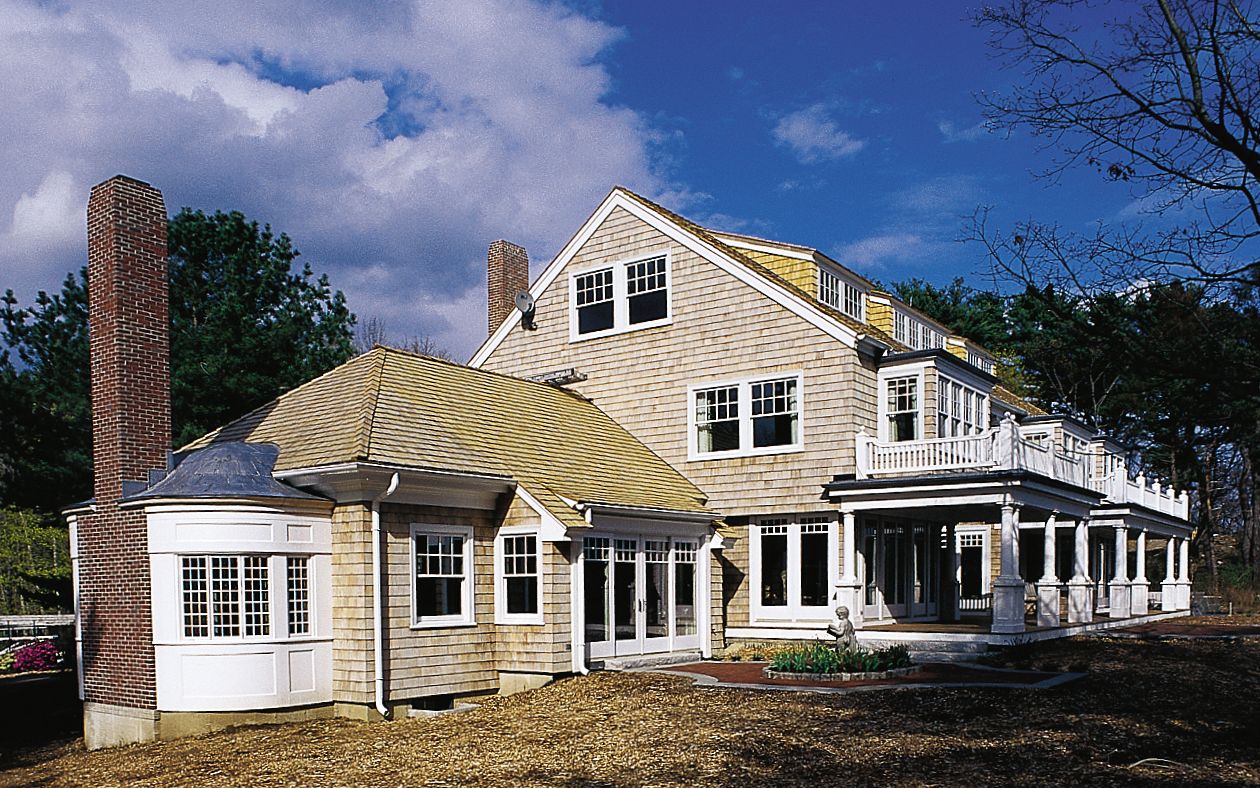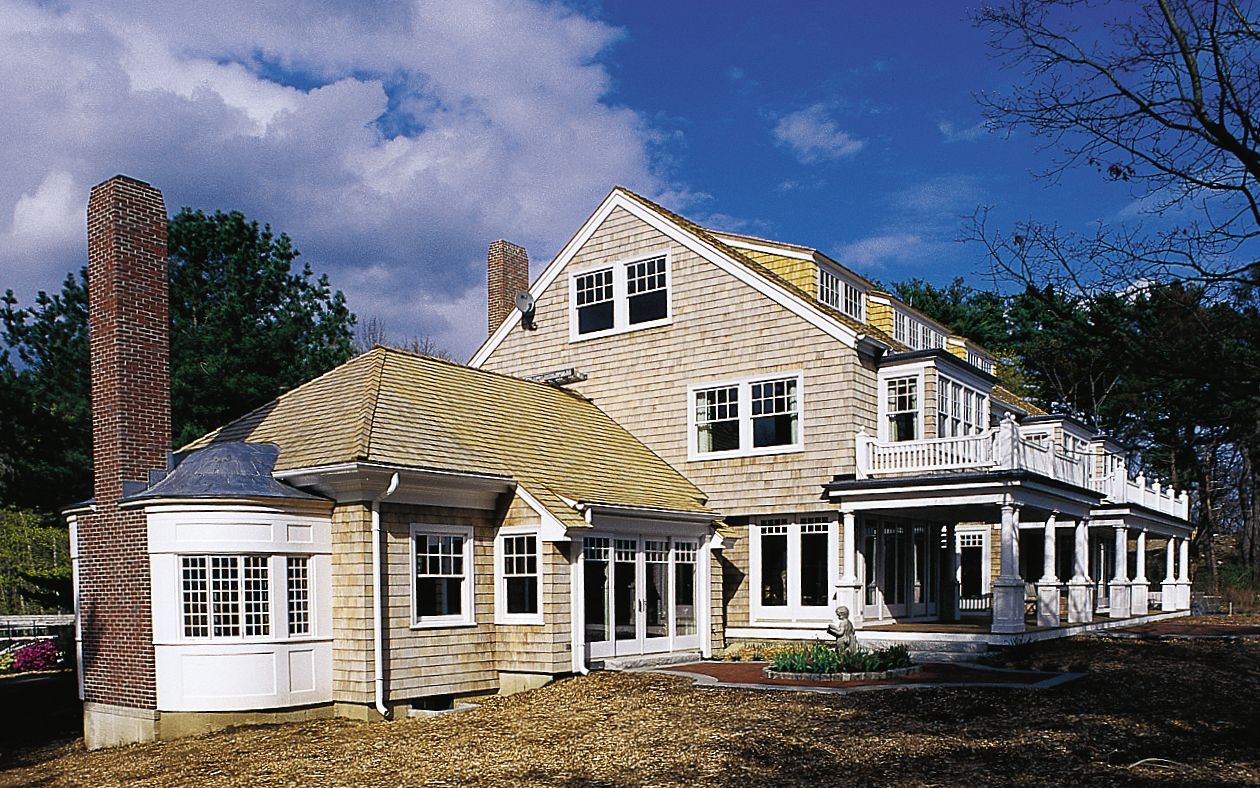
Having enjoyed my few minutes of This Old House fame and a chance to contribute to the improvement of the acoustics in the McCues’ wonderful Manchester home, I now have the chance to add some additional words on this installation and on living room acoustics in general.
The living room in the McCue residence presented a number of acoustic issues, some common to many homes, others a bit more unique to Mr. McCue. Common issues for residential family/media rooms can usually be divided into two large areas of concern:
- Noise disturbances — what we can call External Acoustics
- Sound reproduction — what we can call Internal Acoustics
Although solutions for these two types of problems often involve the
same designs, for the moment let’s deal with these two issues separately.
External Acoustics
In the McCue residence, External Acoustic issues were discussed and
identified, but in the end required no additional work. Cost and priorities determined that these types of external acoustic noise concerns were minor compared to the internal room enhancement goals. For a house with different goals, ground floor conditions and budgets, another approach to these concerns might have resulted in possible changes to the house design.
For example:
1. If music was desired to be listened to at loud levels (not the case with the McCue room), increased isolation between this room and other spaces in the house might have been desired. In the McCue residence, with this room being open to many of the ground floor rooms, this issue was academic; but in an alternate design, sound-proofed doors and windows could have been used in this room as well as a higher transmission-loss construction in the floors, walls and ceilings.
2. In critical listening environments, other noises such as air conditioning are often designed to have quieter-than-normal quietness
values — referred to as Noise Criteria (NC) levels. This was discussed with the McCues and also agreed not to be a critical issue in
this house. In dedicated home-theater rooms I would recommend that quiet values (NC30 and below) be designed.
Internal Acoustics
All of the “additional” acoustic work in the McCue residence living room
was dedicated to its primary use: listening and performing. In other
words, dedicated to improving the internal acoustics of the room — improving the accuracy of what people hear in the room. David McCue is a concert pianist and opera fan, he loves to play and perform, and he envisioned the living room as a small concert hall for piano and three-to five-piece ensemble performances. One area of the room is slightly raised and doubles as a kind of stage — the grand piano lives here. Additionally, this room is the primary listening room for a high-quality stereo playback system.
In somewhat oversimplified terms, the analysis and subsequent design
additions for improving the acoustics of this type of room would include (not necessarily in this order):
1. Low-Frequency Modal Analysis
The first step is an analysis of the room’s geometry for low-frequency
standing-wave relationship. In very simple terms this is the tendency of
a room to resonate naturally at certain frequencies (usually base tones up to about 300hz). A well-balanced room will have these tendencies at as even a frequency distribution as possible. The ratios of the three primary axes of the room determine this tendency. If we have the luxury of creating these ratios prior to analysis, this makes things
considerably easier. But in the case of the McCue living room, this
shape was already determined, thus we were only able to analyze the room profile and determine if low-frequency absorption would be required to correct standing-wave anomalies.
Luckily this was not really the case in this room. The room ratios are
quite acceptable (I’ll spare everyone the math on this problem!). Additionally, since the McCues did not consider it critical to have acoustic isolation in the living room, the walls and ceiling for the room were not constructed in an especially stiff fashion. This lets the walls and ceiling to act as a type of absorber for these tones, allowing a certain amount of low-frequency energy to simply leave the room. (In a more isolated situation, such as a dedicated basement home theater,
balanced low-frequency response would become a bigger issue to deal
with.)
2. Mid- to High-Frequency Reflection Control
This is probably the most important area of concern for the McCues. Ensuring a reverberant room — in other words, making sound remain in the room as long as possible — is the type of acoustic control that will benefit their living room the most. However, harsh
reflections, such as the bouncing of sound between the two parallel hard
surfaces of the ceiling and floor, is not desirable. The room design called for a hardwood floor and a parallel gypsum ceiling. Additionally,
the center of the room has a vaulted, concave-curved gypsum surface around its perimeter. My initial suggestion was for these surfaces to be detailed with sound-absorption material covered with fabric, but that
was rejected for esthetic reasons. The solution we all settled on calls
for the use of a relatively new product that is, in essence, absorptive
plaster. It is applied in a three-step process, resulting in a surface
that appears just like plaster (or gypsum board), but has the absorptive qualities of most types of insulation. Harsh reflections (and subsequent tonal imbalances) are thus “erased” from the center of the room, while still maintaining the look and feel of the original design.
3. David’s Piano Area
David created what essentially is a small stage within the room, an area
in which our most important concern was what David himself will hear
when he plays piano. The area in the room is slightly raised, but has a
lowered ceiling. As mentioned above, most of the room has a high,
central vaulted area giving the room increased volume and more breathing room for sound to naturally propagate. But original designs called for the lowered ceiling of this space to be continuous with the return soffit in the room and thus constructed out of gypsum board or plaster. Bearing in mind the choice of wood for the room’s flooring, this again would result in harsh echoes — called flutter echoes — in this area, also causing frequency misdistribution.
The solution was to cover this portion of the lowered ceiling in the piano alcove with fabric — which is acoustically transparent —and then install diffusive panels above the fabric in the ceiling volume. For this we used a pre-fabricated diffusion element (2 feet by 2 feet by 8 inches deep), which has good mid- and high-frequency diffusion characteristics. This will keep all of the piano “energy” in the room
while helping to scatter it more evenly throughout, reducing harsh
reflections and tone distortions — creating a more accurate and
even distribution of frequencies where David is seated, our ultimate
goal.
Conclusion
So in summary, you may naturally ask… “Is this worth it?… How much
money should I spend on improving acoustics in my living room?…” and
other such questions.
David McCue had a specific reason for wanting his living room to sound
as acoustically accurate as possible. Would a more typical living room or media room warrant this amount of work? Possibly not as much; but it is certainly a wonderful experience to listen to music or watch a movie
and accurately hear the performed instruments or the content that was
actually recorded. In general, people enjoy listening to music in reverberant spaces that are acoustically accurate. If you love looking at paintings, you would most likely not have fluorescent lighting in
your room, even if it was less expensive to install and maintain.
Today’s living room, or family room or great room, is becoming the center of focus for more and more events. The analogy for sound is similar.
Admittedly, this kind of work is not always inexpensive. “Bang for the
buck” is a constant issue to deal with in most house designs. The acoustic work for the McCues’ living room cost approximately $25,000. A more typical investment for an incremental improvement in room acoustics
might range from $5,000 to $10,000: more like the cost of an additional
half-bath or larger swimming pool.
In the end, the question of whether it’s worth it is up to the individual homeowner. In the McCues’ case, increasing their renovation budget by 1 or 2 percent to ensure complete listening and piano-playing
enjoyment seems like a sound investment to me.
John Storyk was the acoustical designer for the Manchester project.

